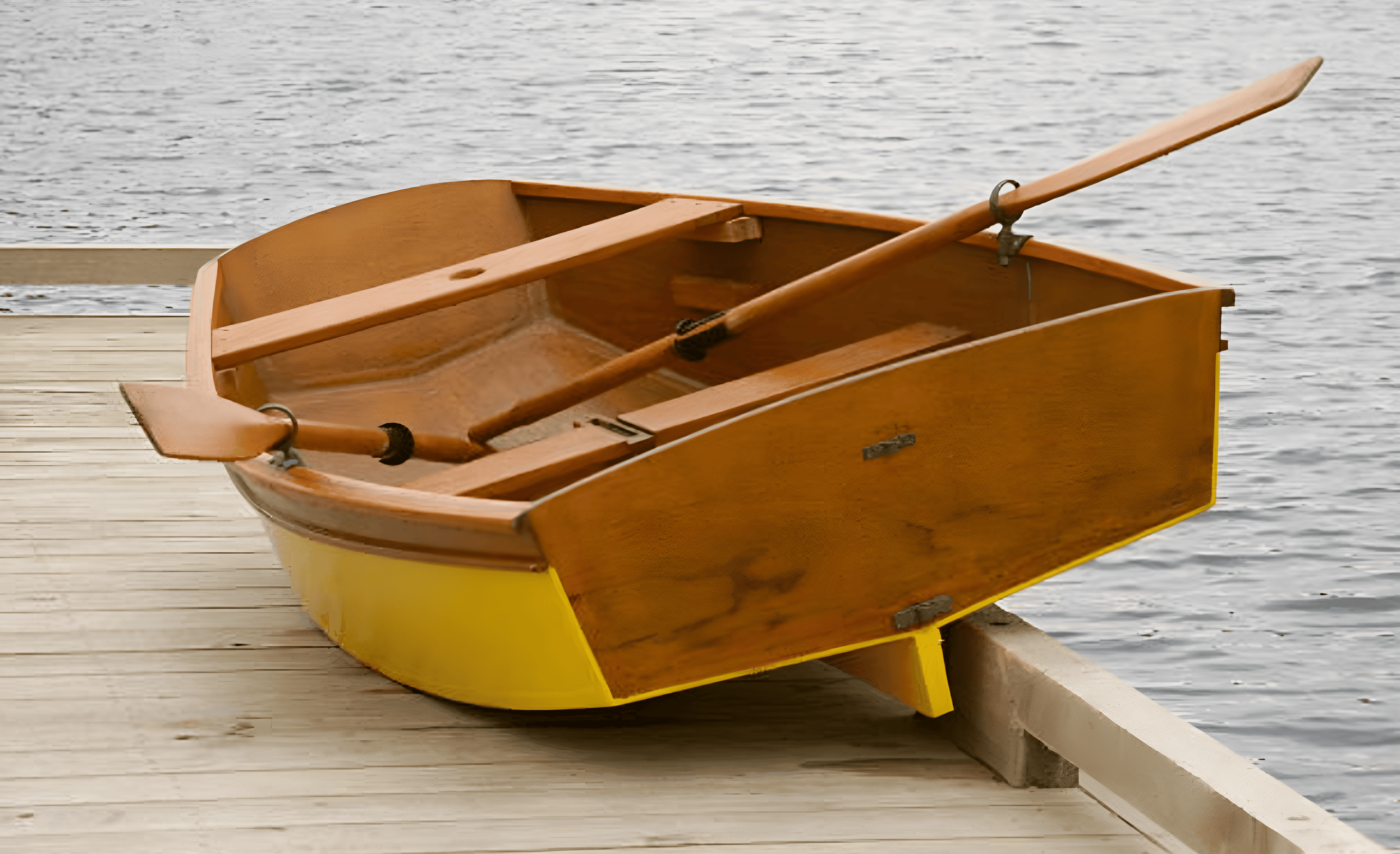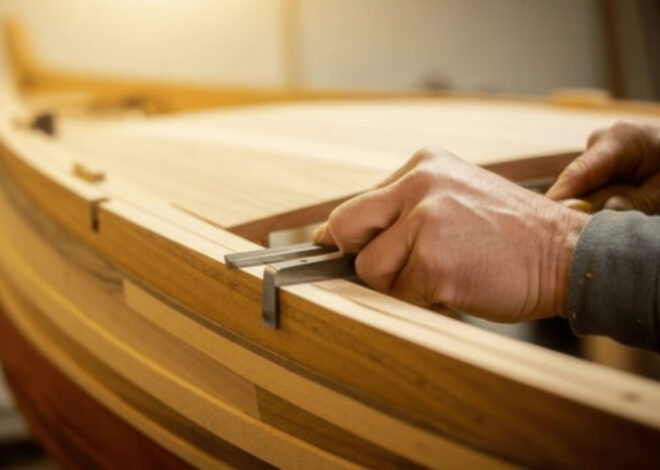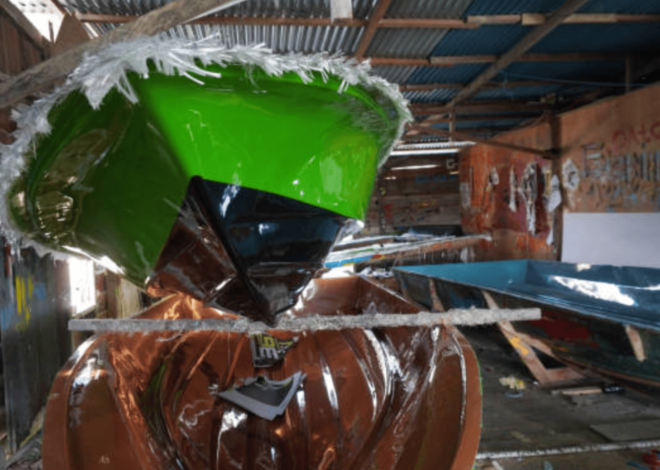
How To Build A Pontoon Boat
Welcome to the ultimate guide on how to build a pontoon boat. Building your own pontoon boat is an exciting adventure that combines creativity, craftsmanship, and a love for the water. Imagine gliding across serene lakes or entertaining friends during sunset cruises—all from a vessel you crafted with your own two hands.
Whether you’re looking to save some money on purchasing a ready-made boat or simply want a project that offers personal satisfaction, constructing your pontoon can be incredibly rewarding. In this guide, we’ll walk you through every step of the process—uncovering essential materials, outlining tools you’ll need, and providing detailed instructions to help bring your vision to life.
So grab your toolbox and let’s dive into the world of DIY boating!
Materials and Tools Needed
When embarking on your pontoon boat-building journey, having the right materials and tools is crucial. Start with marine-grade plywood for a sturdy deck. It’s designed to withstand moisture, making it ideal for watercraft. You’ll also need aluminum or plastic tubing for the frame and pontoons.
These materials are lightweight yet durable, ensuring stability on the water. Gather essential tools too. A circular saw will help you cut wood with precision. A drill is necessary for fastening components together securely. Don’t forget safety gear like gloves and goggles to protect yourself during construction.
A level will ensure your structure sits evenly, which is vital for performance. Stock up on screws and adhesives specifically made for marine applications. This guarantees that everything holds up against waves and weather conditions over time.
Step-by-Step Building Process:
The building process of a pontoon boat can be thrilling and rewarding. Each element contributes to a better boating experience while ensuring you stay safe on your adventures!
A. Design and Planning
Before diving into construction, take time to design and plan your pontoon boat. Visualizing your project is crucial for a successful build.
Start by sketching out the dimensions. Consider the size you want based on intended use—fishing, leisure, or water sports. A larger boat offers more space but requires more materials and effort.
Next, choose a layout that suits your needs. Think about seating arrangements and storage options. Will you include a sun deck or perhaps a small cabin?
Research various designs online for inspiration. Learn from others’ experiences to avoid common pitfalls.
Create a detailed list of materials needed based on your design choices. This step will streamline the building process later on and ensure you have everything ready when it’s time to start constructing your dream vessel.
B. Building the Frame
Building the frame is a crucial step in creating your pontoon boat. This structure serves as the backbone, supporting everything from the deck to the pontoons.
Start with sturdy materials like aluminum or treated wood for durability and strength. Make sure to measure accurately; precision is key here. Use a level tool to ensure that everything sits evenly.
Construct your frame in sections for easier handling. Join pieces using bolts and screws rather than nails, as this provides better stability over time.
Consider adding cross members for extra support, especially if you plan on carrying heavy loads or accommodating more passengers.
Don’t forget about weight distribution! A well-balanced frame will enhance performance on water, making your boating experience smoother and safer.
C. Adding the Deck and Flooring
Once your frame is ready, it’s time to add the deck and flooring. This step transforms your pontoon from a skeleton into something functional and inviting.
First, choose materials that are both durable and lightweight. Marine-grade plywood or composite decking is ideal for this purpose. These options resist moisture and provide a sturdy base for years of enjoyment.
Cut the decking panels to fit your boat’s dimensions precisely. Secure them using stainless steel screws; these won’t rust over time, ensuring longevity.
Don’t forget about aesthetics! You can stain or paint the wood to match your style preferences. Adding non-slip coatings enhances safety while moving around on wet surfaces.
Consider incorporating storage solutions beneath the deck for added convenience. Hinged hatches are perfect for stowing gear while keeping everything easily accessible during outings.
D. Installing the Pontoons
Once your frame is ready, it’s time to focus on the pontoons. These floating cylinders are essential for buoyancy and stability.
Start by positioning the pontoons according to your design. Typically, they should be evenly spaced and securely attached to the frame. This ensures a balanced weight distribution when you’re out on the water.
Use bolts or brackets for attachment, as these provide a sturdy connection that can withstand various conditions. Make sure everything aligns perfectly; misalignment could affect performance.
Sealing any gaps between the pontoons and frame is crucial too. A waterproof sealant will prevent leaks and enhance durability over time.
Before calling it complete, double-check all connections. Give each pontoon a gentle shake to ensure everything feels stable and secure before moving forward with deck installation.
E. Finishing Touches and Safety Precautions
Now that your pontoon boat is taking shape, it’s time to focus on the finishing touches. Start with sanding down any rough edges. A smooth surface not only looks better but also prevents splinters and injuries.
Next, apply a coat of marine-grade paint or sealant. This step enhances durability against water damage and UV rays. Choose colors that reflect your style while ensuring visibility on the water.
Don’t forget about safety precautions. Install life jackets in easy-to-reach storage areas. Consider adding a fire extinguisher for emergencies. Lighting is also crucial; LED lights can improve visibility during evening outings.
Conduct a thorough inspection of all connections and hardware before hitting the water. Double-check everything from the pontoons to steering mechanisms for secure fittings and functionality—this attention to detail ensures both performance and safety as you embark on new adventures.
Maintenance and Care for your Pontoon Boat
Maintaining your pontoon boat is essential for its longevity and performance. Regular inspections can help you catch minor issues before they escalate into major repairs. Start with a thorough cleaning after every outing. Remove debris from the deck and inspect the pontoons for any signs of damage or corrosion.
A quick rinse with fresh water helps eliminate salt and grime build-up. Check your engine oil, fuel filters, and battery connections regularly. Keeping these components in top shape ensures smooth operation during those sunny days on the water.
Don’t forget about the upholstery! Use marine-grade cleaners to keep fabrics looking fresh. This prevents mold growth while maintaining comfort for all passengers. Store your boat properly during off-seasons. Cover it up to protect against harsh weather conditions, ensuring it’s ready when adventure calls again.
Tips for Customization and Personalization
Customizing your pontoon boat can turn a standard vessel into a reflection of your personal style. Start with the color scheme; bright hues or classic neutrals can make a bold statement. Consider adding unique seating options, like plush lounge chairs or multifunctional benches.
This not only enhances comfort but also creates an inviting atmosphere for gatherings. Lighting plays a key role too. LED strips along the edges and under the deck add flair while improving visibility at night. Don’t forget about storage solutions; custom compartments keep essentials organized and accessible.
Think about themed decor—nautical elements, artwork, or even personalized flags can showcase your personality on the water. Embrace creativity to transform your pontoon into something truly one-of-a-kind!
Benefits of Building your Own Pontoon Boat
Building your own pontoon boat offers a sense of accomplishment. There’s something special about creating a vessel tailored to your needs and preferences. Customization is another major perk. You have the freedom to choose the materials, colors, and features that resonate with you.
Whether it’s adding extra storage or installing luxurious seating, the possibilities are endless. Cost-effectiveness also plays a role in this decision. Constructing your boat can save significant money compared to buying one outright. You’ll find options for budget-friendly materials without sacrificing quality.
Beyond personal satisfaction and cost savings, building your own pontoon fosters hands-on learning experiences. It enhances skills in design, carpentry, and even basic engineering principles. There’s an undeniable connection formed between builder and boat. Every wave it cuts through feels like an extension of yourself—an adventure waiting to happen on those sunny days by the water.
Safety Precautions and Inspections
Safety is paramount when building a pontoon boat. Start by ensuring your workspace is organized and free of hazards. Always wear safety goggles and gloves to protect yourself during construction. Regular inspections are crucial once the boat is completed. Check for any loose bolts or connections, especially after your first few outings on the water.
It’s easy to overlook these details, but they can make a big difference in performance and safety. Before each trip, inspect the pontoons for leaks or damage. Ensure that all components are secure and functioning properly. Don’t forget about life jackets and emergency kits onboard.
Having them readily available ensures you’re prepared for unexpected situations while enjoying your creation on the water. Consider scheduling an annual inspection with a professional to catch anything you might miss, keeping both you and others safe while cruising around in style.
Final Thoughts and Considerations
Building a pontoon boat is an exciting venture that allows you to create a watercraft tailored specifically to your needs and preferences. The process requires careful planning, creativity, and attention to detail.
As you embark on this journey, remember that patience is key. Each step of the building process contributes to the final product. Take your time with design and construction; ensure every piece fits perfectly.
Safety should always be at the forefront of your mind. Regular inspections will help keep your boat in top condition and prolong its lifespan. Don’t forget about maintenance either—it’s essential for a smooth ride on the water. Customization offers endless possibilities for personal expression.
Whether it’s adding unique features or choosing specific colors, make it yours. Building your own pontoon boat not only saves money but also provides immense satisfaction as you take it out onto the open waters knowing you crafted it yourself. Enjoy each moment spent on your new creation!



